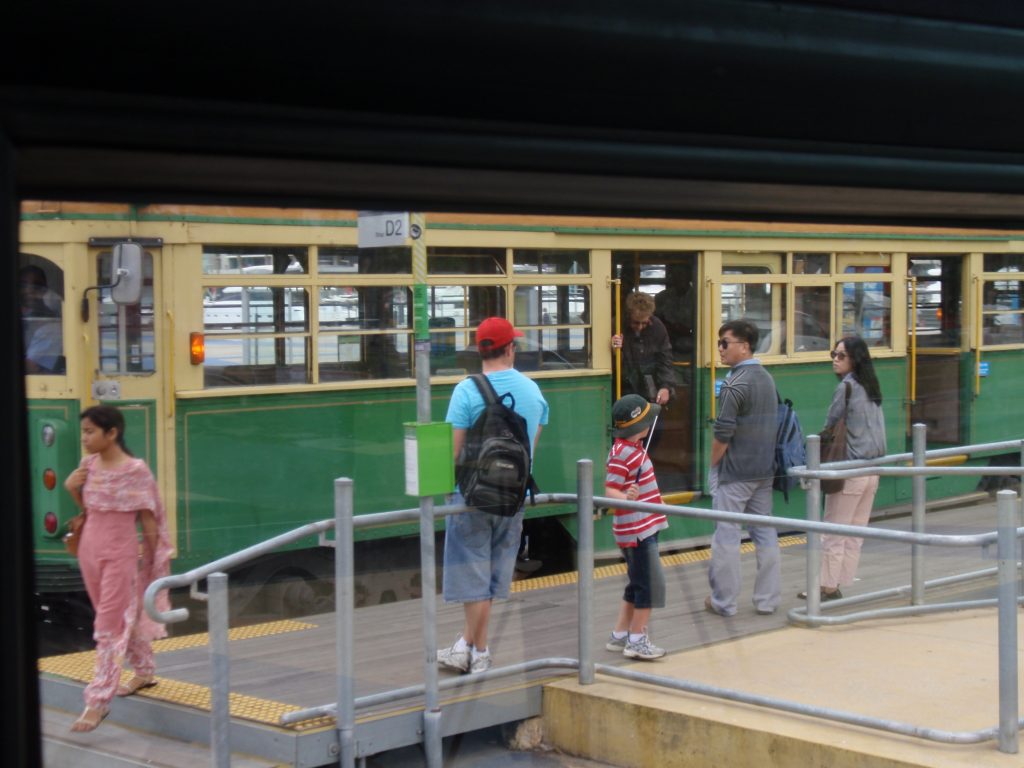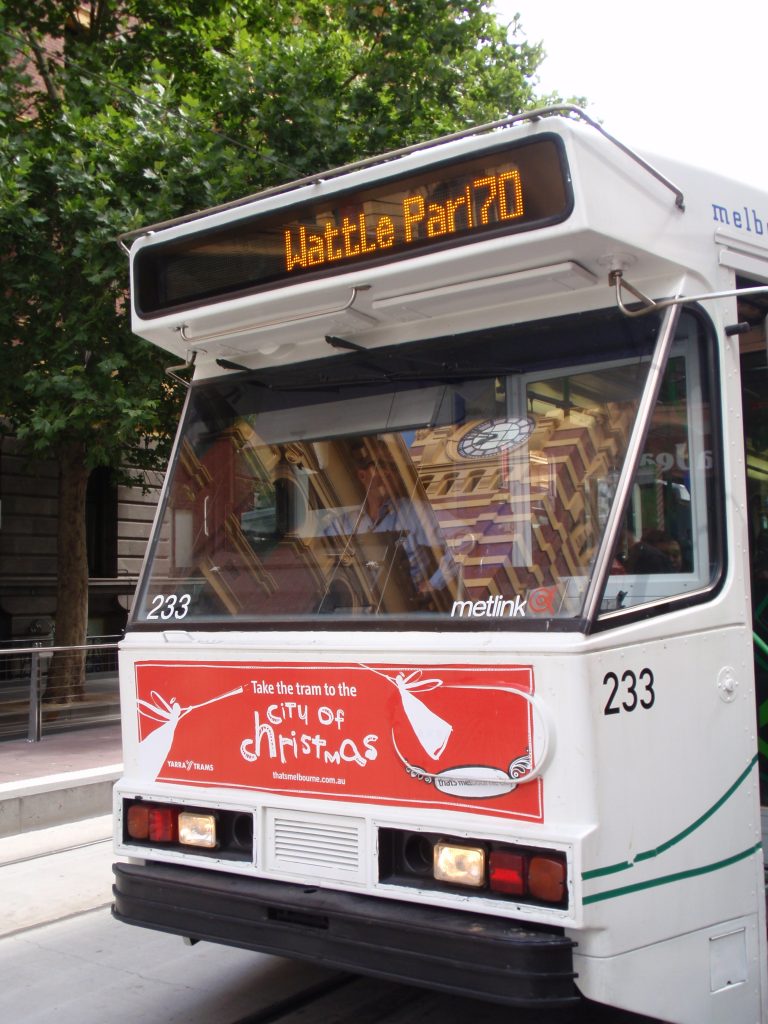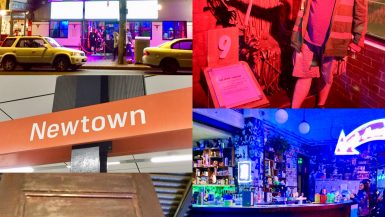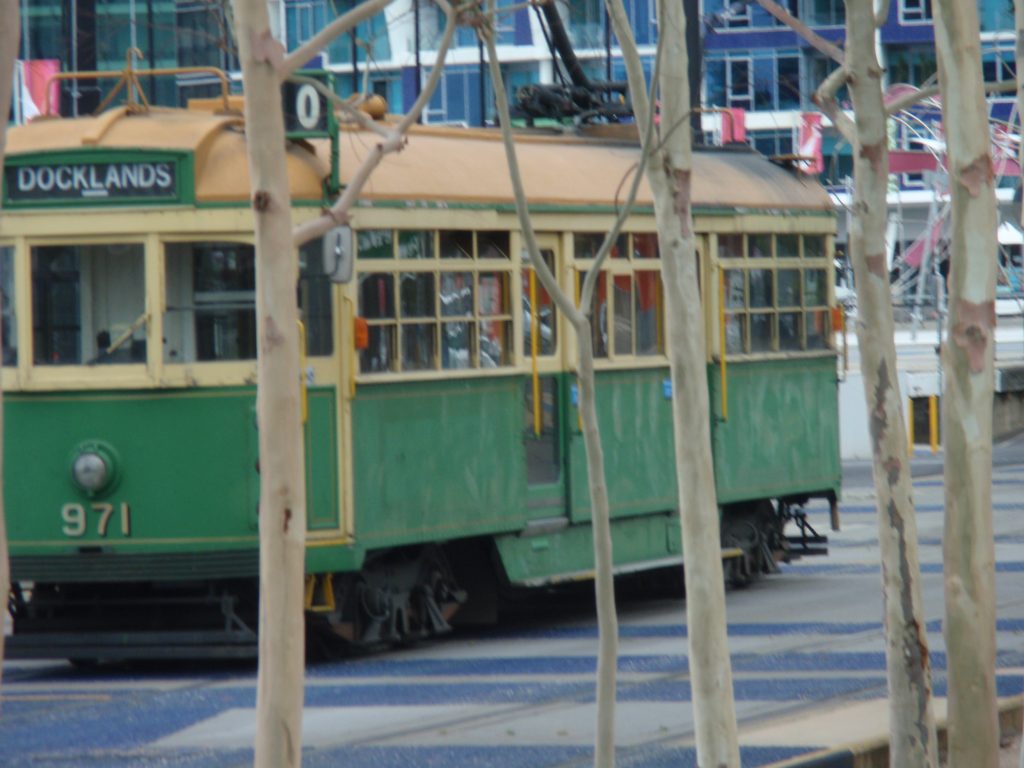
Many cities around the world have a mode of transportation they are famous for. London has its Underground, San Francisco has its cable cars, Chicago has the “L”, and Los Angeles has its labyrinth of freeway exits. Melbourne, Australia has the largest network of streetcar and tram lines in the world. What’s even cooler is that many of their streetcars look like their stuck in time, specifically they are antiquated. Many bear resemblance to San Francisco’s F Market line, or Brooklyn’s old streetcars. Frankly, I like these streetcars because it gives the city an old-fashioned feel to it. It’s nice to have a reminder of how people in the old days commuted, and even nicer when it can live along side the more modern versions. It says that this city is proud of its heritage. One must appreciate how long these vehicles have been around. Quite a most enjoyable way to see Melbourne!
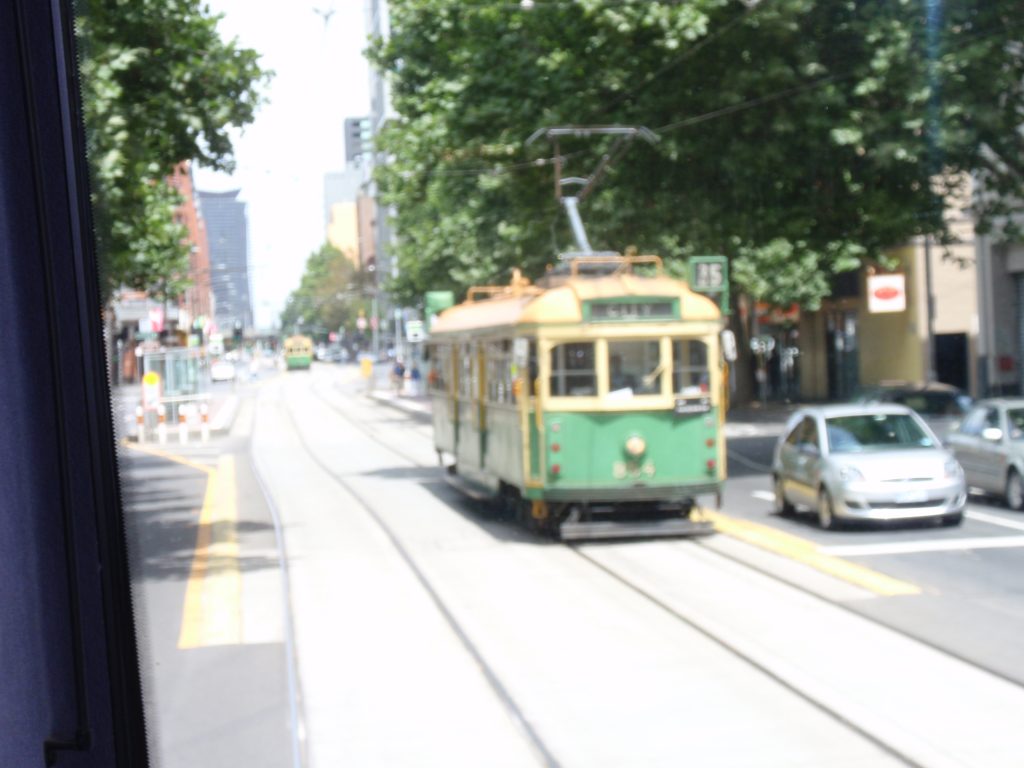
The Melbourne Tramway Network consists of 250 km (155.3 mi) of track, 487 trams, 30 routes, and 1,763 tram stops. Trams are the second most used form of public transport in overall boardings in Melbourne after the commuter railway network. It is the largest urban tramway network in the world. Trams have been operational throughout Melbourne since 1884; they have since become a distinctive part of Melbourne as both a prominent symbol of transportation and its history.
One of the most famous tram lines is the City Circle line, which is a zero-fare (free service) tram that runs a loop around the Central-Business District and nearby Docklands area of Melbourne. Most of the route covers the streets within the Hoddle Grid, which is the majority of the Central Business District of Melbourne. The tram route was introduced on April 29th, 1994. The route of the City Circle follows along La Trobe Street, Harbour Esplanade, and Flinders Street. It follows along Spring Street between Flinders Street and Bourke Street, but travels along Nicholson Street and Victoria Street before turning into La Trobe. At the junction of Harbour Esplanade and La Trobe Street trams turn off the loop to run to and from a terminus towards the end of Docklands Drive. The best place to begin the ride is in front of Flinders Street Station, because it is easy to find, and also because it seems rather symbolic; starting a tram journey in front of the busiest train station in Australia. The City Circle trams are easy to spot from their special maroon and green with yellow and gold trimmings. Trams display the route number 35. The average ride on the City Circle is approximately 48 minutes long.
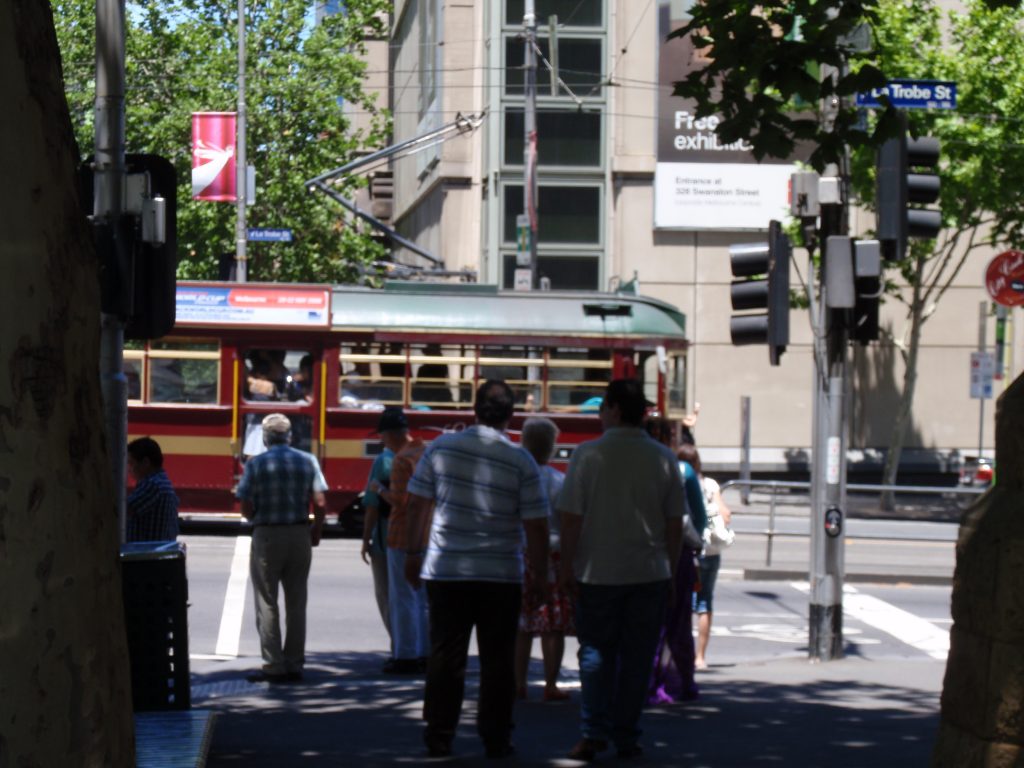
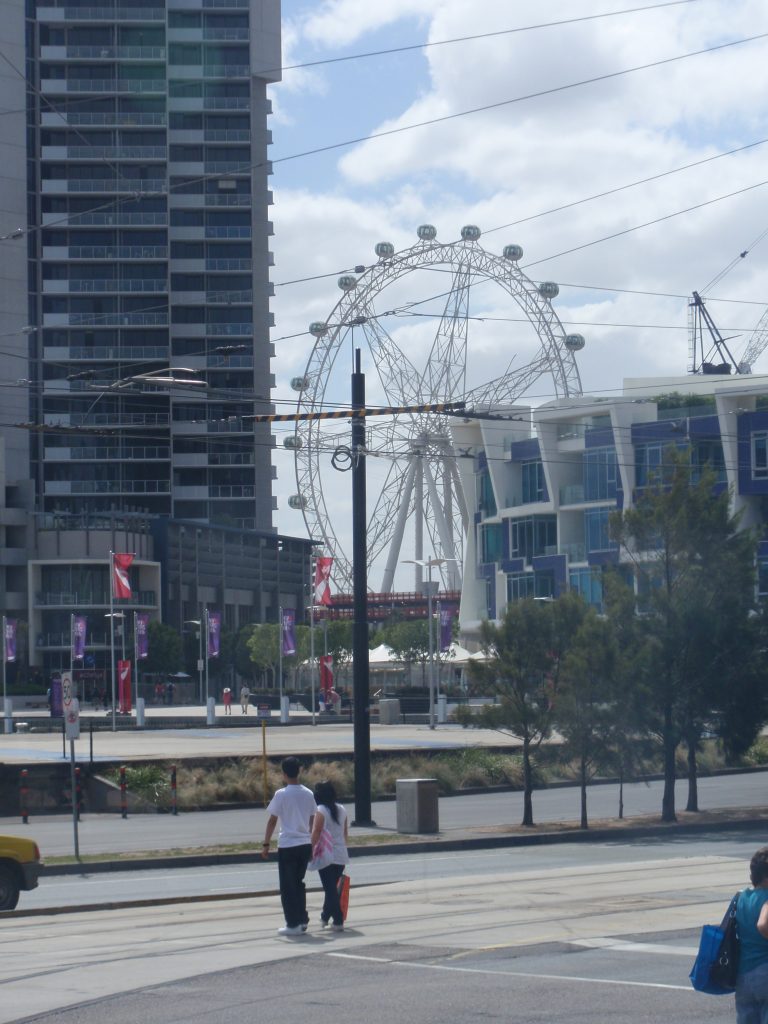
For me, there is no better way to see the city of Melbourne than hopping aboard one of these great vehicles. Traveling on a fixed route through one of the largest cities in Australia, surrounded by tall buildings, busy harbor fronts, and beautiful parks make for an unforgettable ride.
